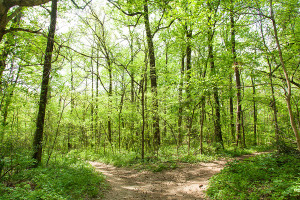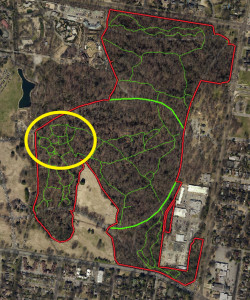Old Forest Management Plan
 This past Saturday, several dozen park lovers joined us to review a draft of the Old Forest State Natural Area Management Plan. Drafted by the Tennessee Department of Environment and Conservation’s State Natural Areas Division, the plan outlines a path for Overton Park Conservancy to effectively preserve and manage the forest.
This past Saturday, several dozen park lovers joined us to review a draft of the Old Forest State Natural Area Management Plan. Drafted by the Tennessee Department of Environment and Conservation’s State Natural Areas Division, the plan outlines a path for Overton Park Conservancy to effectively preserve and manage the forest.
Read the draft management plan here.
Overton Park Conservancy has been managing the Old Forest since 2011, and we’ve partnered with TDEC every step of the way. The purpose of designating the Old Forest as a State Natural Area is to provide it legal protection from development or encroachment, and to provide a framework for helping the ecosystem to thrive. As a Class II Natural Area, TDEC has deemed the Old Forest “unique in natural or scientific value and…worthy of perpetual preservation.” Therefore, the plan focuses primarily on the forest’s ecological health and secondarily on its use as a recreational area.
In assessing potential threats to the forest, two major possibilities were identified: invasive plant species and excessive and redundant trails. The Conservancy has already been working to control or eliminate invasive plants that threaten the native ecology of the forest, and that work will continue. We’ll focus first on the most harmful plants, like kudzu and Chinese privet, and move down the list from there.

The management plan also gives us a solid framework for developing a true managed trail system in the Old Forest. Many small dead-end or spur trails have popped up over the last several decades, particularly in the western area of the forest near Overton Bark. These paths detract from the established trail system, creating confusion for park users and offering a welcome secluded spot for illicit behavior. They also cause erosion, take space away from native trees and wildflowers, and create disturbed areas for new invasive plants to spread.
The management plan recommends developing guidelines for the forest’s trail system, which would include closing some of these small redundant paths. The Conservancy created GIS maps of the trails in 2013, and plans to partner with Rhodes College in 2015 to update these maps. This will aid in eventually creating a better signage and interpretive program that makes the trails easier to navigate and encourages positive use. Cyclists and pedestrians will still be welcomed on the forest’s trail system, but will have a clearer, more visible path to follow.
If you were unable to attend Saturday’s meeting but would like to offer comments, please do! There’s a feedback form below, and we’ll pass your remarks on to TDEC for consideration in the final plan.
[wufoo username=”overtonpark” formhash=”rh5tzkm0zyjt60″ autoresize=”true” height=”730″ header=”show” ssl=”true”]



